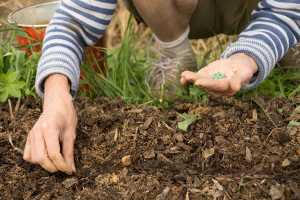5 Tips for Preparing a Vegetable Garden
 It certainly would be nice to have a vegetable garden in your backyard. With a well-tended vegetable garden right there within your property, you no longer have to run off to the grocer’s for an extra tomato or whatever vegetable you might need at the time.
It certainly would be nice to have a vegetable garden in your backyard. With a well-tended vegetable garden right there within your property, you no longer have to run off to the grocer’s for an extra tomato or whatever vegetable you might need at the time.
However, before you have it easy, you will have to do a bit of hard work first before you can grow a bumper crop of veggies. You have to prepare the soil and the area surrounding it first. Here are some tips on doing just that.
1. Pick a spot with lots of sunlight
Vegetables are plants, and plants love a bit of sun. They are going to need up to 6 hours’ worth of sunlight every day. So pick a spot that you know will get lots of sunlight.
2. X marks the spot
When you’ve picked a spot for your veggie patch, mark that spot straight away. You can mark the boundary with a peg or any piece of wood that you can stick into the soil, or you can use a length of string for that purpose.
3. Remove weeds and other existing plants
Your vegetables are going to need the plot for themselves, so you have to make it free of weeds or other existing plants. After removing the competition, so to speak, you will then need to dig, lift and turn the soil for your entire vegetable garden bed. When it’s time to plant, add at least 75 mm layer of mulch—specifically sugar cane mulch, which is great for suppressing weed growth—to your topsoil.
4. Transform the soil into a fertile area
To get a nice harvest in the future, the soil bed for your vegetable garden must be very fertile, so if your soil isn’t naturally that rich, there are number of things you can do to help it become one. To make the soil for your veggie patch more nutritious, you can add compost, manure, fertiliser or any rich organic matter to it. Then you will have to turn your garden bed again, adding fresh garden soil as you go. Let it stay for two weeks, then dig it through again before planting the seedlings for your vegetables.
5. Create a raised bed
A raised bed can add depth to a veggie patch that might have problems because of excessive water or clay soil. With a properly raised bed, water will drain more effectively, and you can get to that deep layer of fertile soil much more quickly. As a result, your yield will be more than double what you can get with an unprepared bed.
To create a raised bed, you will have to make a simple border about 30 centimetres high that will keep in the soil that you pack into it. Many gardeners prefer wood, but you can also use bricks, blocks, corrugated iron or even piled rocks to make a border. Then again, ready-made raised beds are already being sold in stores, and all you have to do would be to put it in position and fill with fertile soil.
When you’re done preparing the soil, waste no time in planting. In time, you will be enjoying the luxury of just picking from your backyard whatever vegetable you may need at any given time.


Leave a Reply
Want to join the discussion?Feel free to contribute!